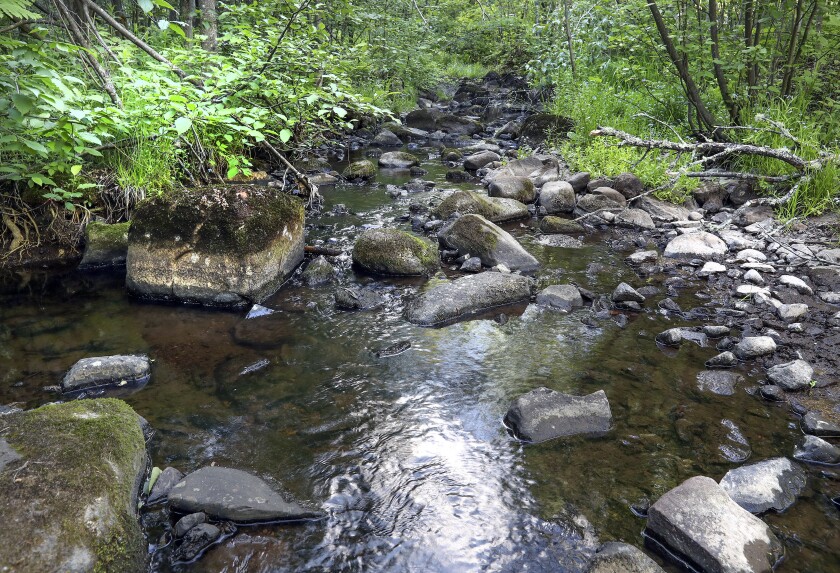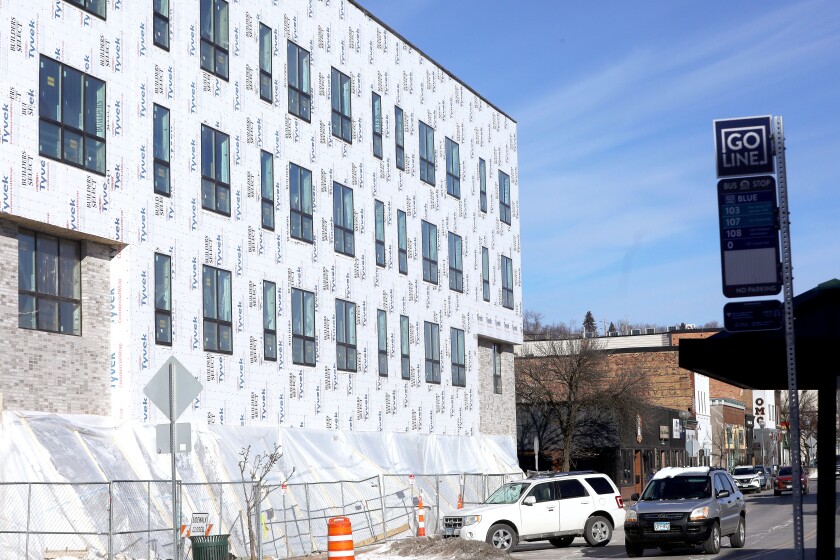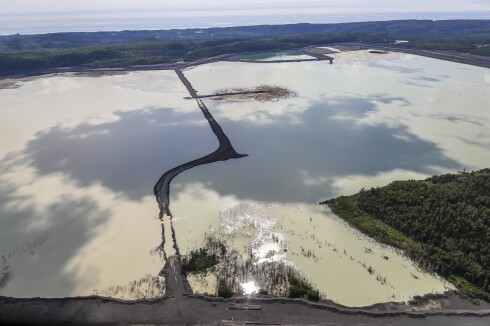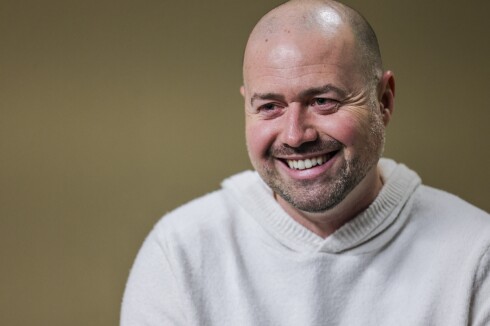DULUTH — Help soon could be on the way for one of the city’s oldest cemeteries as it continues to crumble into Lake Superior.
Even though St. Louis County does not bear responsibility for the privately owned property, its staff has taken the lead in efforts to develop a plan that could protect Scandia Cemetery, 3200 London Road, after exposed human remains were discovered there below an eroding clay bank at water’s edge in August.
ADVERTISEMENT
St. Louis County Commissioner Patrick Boyle said the declining condition of the cemetery had previously been discussed as a public concern. “But when bones showed up on the beach this summer, we all agreed: Now, this really needs to become a top priority.”
Initial speculation that the bones could have been of Indigenous origin, and not from the cemetery, was largely dispelled by genetic testing that showed the remains belonged to someone of Western, likely Anglo-Saxon, descent, Boyle said.
The first documented burial at Scandia occurred in 1881, and records indicate more than 1,550 people were interred there. The actual count may be significantly greater, though, as people may have been buried in unmarked graves during the late 1800s and early 1900s when deadly outbreaks of typhoid fever and influenza struck the region.
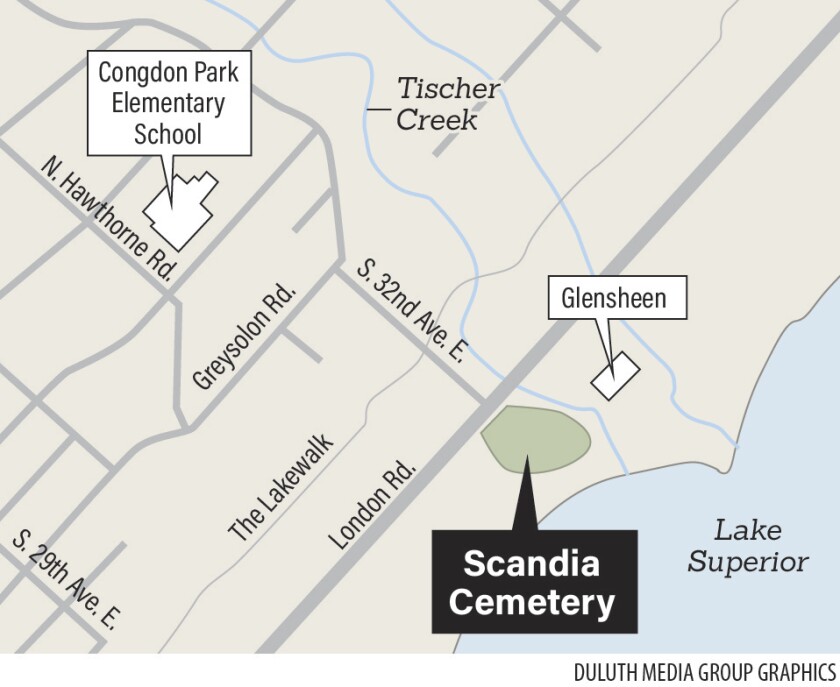
Given the complexity of the situation on the ground, 2nd District Duluth City Councilor Mike Mayou credits St. Louis County for stepping forward to assist in the absence of a clear path forward.
The Scandinavian Cemetery Association owns and manages the property, but Mark Knutson, a local attorney who volunteered his services to represent the nonprofit organization, said that with less than $15,000 in its accounts, the group lacks the financial wherewithal to remedy the situation.
Nevertheless, St. Louis County Director of Public Works Jim Foldesi said staff felt compelled to work toward some sort of a solution that could prevent the disturbance of still more graves.
“It’s about the dignity of the people who are in those graves and respect for their families,” he said. “Somebody had to step up. So, we did.”
ADVERTISEMENT
Working in conjunction with consultant LHB, county staff conducted a topographic survey of the site and put together preliminary estimates of what a remedy could cost. They considered both a riprap barrier on the shoreline and a concrete retaining wall as options, before settling on the latter as the more cost-effective and longest-lasting solution.
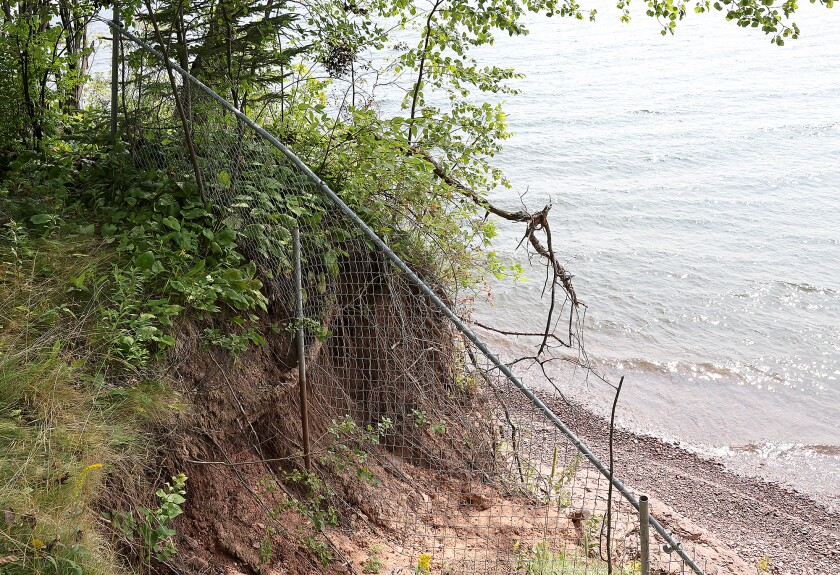
Foldesi said the county also researched the possibility of relocating graves and moving those near the shoreline to other plots further inland.
But that approach simply buys additional time and does nothing to remedy the ongoing long-term threat of erosion. Meanwhile, Foldesi said the cost of relocating about 175 graves that appear to be in greatest peril could easily cost around $1 million to $1.5 million. He explained that the affected graves would need to be exposed with great care, largely by hand to minimize any damage to human remains. And then, there’s also the wild card of undocumented burials.
Even after bodies were exhumed, surviving family members would need to be tracked down and consulted to determine their wishes for a proper relocation.
“It turns into a gigantic paperwork challenge and almost an archaeological-level disinterment project,” Foldesi said.
The county determined its preferred solution would be to gird vulnerable sections of the existing shoreline with a concrete wall, leaving as many graves undisturbed as possible. Foldesi said the county would seek easements to allow for the construction and maintenance of the wall but would aim to keep these as narrow as possible, limiting its future responsibility for any cemetery property.
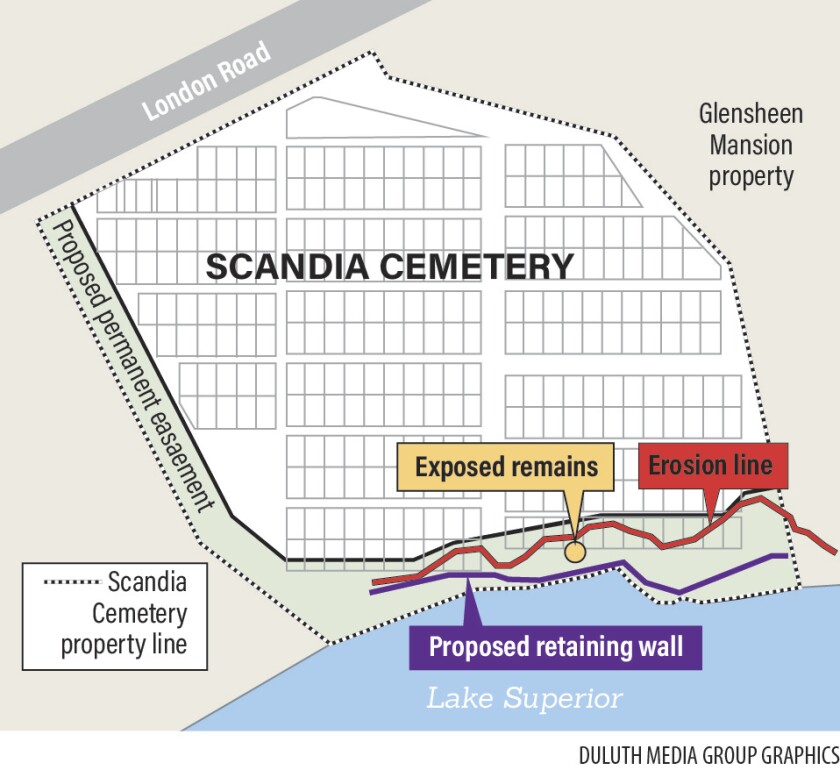
In order to tackle the project, Foldesi said the county will seek $250,000 in Emerging Issues funding from the Legislative-Citizen Commission on Minnesota Resources to complete requisite preliminary design and engineering work.
ADVERTISEMENT
Once those documents are prepared, the county then intends to request about $2.3 million in funding to construct the wall, either in the form of state bonding support or a direct appropriation.
Mayou successfully sought to add the Scandia Cemetery project to a city resolution outlining the list of legislative priorities in 2025.
Foldesi said that if funding becomes available, the construction will likely be supported from shore, rather than from water, using barges, which could be less predictable.
While requests for state funding often can take years to bear fruit, Foldesi believes the urgency of the need for aid at Scandia Cemetery should quickly become evident to lawmakers as they learn of the project.
“Unfortunately, there are remains being exposed on a regular basis at this point, and it is an immediate issue, for sure,” he said.
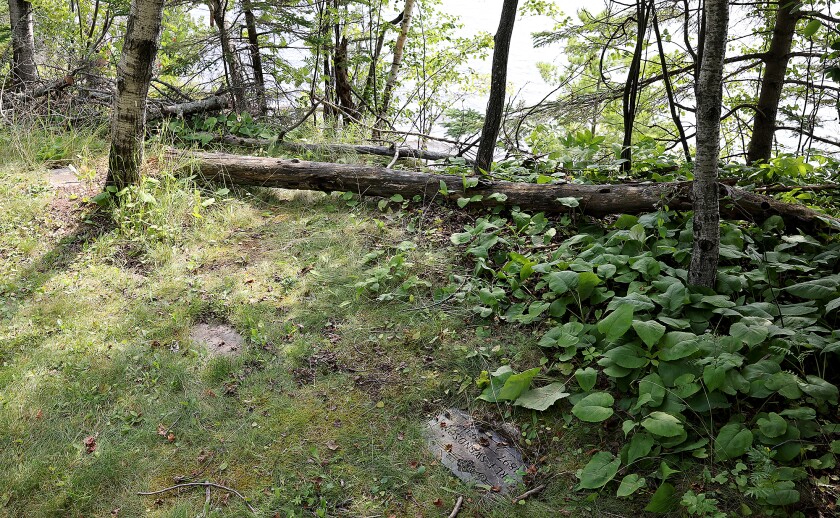
Ideally, Foldesi hopes he can obtain the needed permits and support to get bids in 2025 and begin construction in 2026.
Boyle said Lake Superior’s shorelands have been even more susceptible to damage in recent years when unusually warm weather has offered relatively little ice protection.
ADVERTISEMENT
“I fear that’s just the way it’s going to be in the future,” he said. “So, I think this retaining wall is the best idea.”
Mayou agreed that the frequency and severity of extreme weather events appears likely to continue its recent upswing, due to the ongoing impacts of climate change.
“This is not a Republican or a Democrat issue. This is just a good example of how different units of government can work together to solve a problem,” Boyle said. “The last thing we want is to have more remains washed into the lake.”
Mayou said he’s pleased to get behind the county’s plan to stabilize the cemetery.
“I think the county did a good job of laying that all out," he said, "and I’m super-thankful for their partnership, because they’ve really led this effort.”
By working together, Foldesi predicts county and city officials dramatically will improve their odds of obtaining needed state support.
“It’s clearly going to take a team to get this done,” he said.
ADVERTISEMENT










